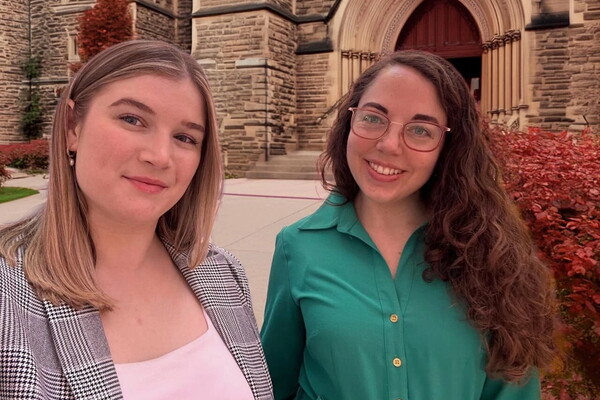Mobile Menu
- Education
- Research
-
Students
- High School Outreach
- Undergraduate & Beyond: Community of Support
- Current Students
- Faculty & Staff
- Alumni
- News & Events
- Giving
- About
On Monday October 8, British researcher John Gurdon and Japanese scientist Shinya Yamanaka were awarded the Nobel Prize in Medicine for the groundbreaking discovery that cells in the body can be reprogrammed into completely different kinds, work that reflects the mechanism behind cloning and offers an alternative to using embryonic stem cells. The work holds hope for treating diseases like Parkinson’s and diabetes by growing customized tissue for transplant.
Dr. Andres Nagy, researcher in the Department of Obstetrics & Gynaecology in U of T’s Faculty of Medicine, senior investigator at Mount Sinai Hospital’s Samuel Lunenfeld Research Institute and Canada Research Chair in Stem Cells and Regeneration, is one of Canada’s leading stem cell researchers and says Drs. Gurdon’s and Yamanka’s research was a real eye-opener.
Dr. Nagy offers his insight on their work:
John Gurdon's groundbreaking work on frog cloning was a real eye opener; for the first time, the dogma that cell differentiation was a one-way street was suddenly overturned. His discoveries eventually led to the cloning of "Dolly the sheep," once and for all proving that reprogramming of somatic cells to a pluripotent state is possible even in mammals. However, the technique of nuclear transfer cloning is tremendously complicated and inefficient.
Yamanaka on the other hand, showed in a surprisingly simple way that the expression of four specific genes are enough to convert fully differentiated cells into stem cells that in turn can become any cell type found in the body. This was a huge breakthrough that gave rise to hopes that one day, stem cells could be derived from individual patients to treat their specific conditions – diabetes, spinal cord injury, blindness and many other diseases that today are not possible to cure.
I congratulate Shinya Yamanaka for the courage to carry out the experiments that not many people believed would be possible to do. They are a clear demonstration of his exceptional talent, vision and determination.


